
Cartridges and discs aren't the only way to play video games, turns out there are many video game consoles that use VHS as a medium, and toys that can respond to certain flashing patterns on the screen. Some of these are more well known, while others have limited information available.
Quick Warning: The following videos in this article contain high-pitched noises and flashing lights, proceed with caution.
These consoles were for educating usually young children, and have a simplistic design in order to be easy for the target demographic to use.
The View-Master Interactive Vision is by far the most unique in terms of technology and interactivity, and quite possibly the only actual video game console on this list.
The console was released in 1988 by the View-Master company and Ideal Toys, and was aimed towards two different age groups, but the full range was three to eight years of age. Seven games in total were made for the system, four for the ever popular Sesame Street, two for Jim Henson’s The Muppets franchise, and one for the characters of Walt Disney. Though judging by the blurb on the back of the box, more tapes were to be produced, but never came to fruition. One tape, titled Sesame Street: Let’s Learn to Play Together, was shipped in-box with the console.
Given the age of the intended playerbase, the gameplay is simple enough for them to understand. The player may be instructed to pick a character’s favorite number, choose the lyrics of a song, put toppings on a pizza, clear bricks from the screen, collect soap bubbles, fill a furnace with coal, or solve a slide puzzle.
The console features a strangely designed controller that sort of resembles a fishing rod, with a single long protruding handle leading to a large circular portion. The handle has three buttons in red, yellow, and blue, while the circular portion has a joystick and two additional green and white buttons. The console itself only features one switch to turn the console on or off.
To connect the console, you must use both the RCA and Coax inputs of the VCR and the television. Oddly, the console connects to the controller, instead of the other way around.
Watching a View-Master tape by itself, you will only see the pre-recorded footage already on the tape, as well as some lines of data on the sides of the screen. The data on the left is the audio track data, while the data on the right is the data to produce graphics on the screen through the console, as well as to switch between the two audio tracks on the tape.
The console actually has the ability to use three different tracks, but only two tracks from the tape can be used at once. It’s possible that the console uses a frequency switch in order to switch between the tracks on the tape, because while the change is seamless, you can still hear noise behind the second audio track when it’s used.
The graphics are displayed through an internal chip in the VCR that is used to display the VCR’s menu and all the other little bits like the tracking info. The graphics of the tapes are very creative, as they are used to cover up parts of the screen in order to only show footage relative to the results of the player’s input or gameplay, such as footage for if the player wins or loses a certain minigame.
The console receives inputs from the controller that give the player the ability to change what is happening during the course of the video or play minigames. The console also keeps score if applicable, but does not keep records of scores from previous plays.
Another thing to note is that at certain points of the video, yellow bars will be on the sides of the screen to indicate that the player can pause the tape without upsetting the synchronization between the tape and the console, or, if synchronization is lost, that the player can rewind or fast forward to a section with yellow bars in order to regain synchronization.
The console was inspired by a scrapped prototype called Nemo, later renamed to Control-Vision, which began development under Hasbro with Nolan Bushnell, co-founder of Atari.
Control-Vision’s prototype consisted of a Colecovision to display graphics, which was then modified to work with hardware that could interpret data from video tapes, which would have multiple video and audio tracks. However, Control-Vision never saw the light of day, due to the proposed price being too expensive to give it a fighting chance in the video game market.
The two games developed for Control-Vision, Sewer Shark and Night Trap, went on to be released for the Sega CD.
Preservationists are currently in the process of getting the console into an emulatable state, with three tapes having their raw footage, main audio, alternative audio, and rendered graphics dumped and available. Hopefully, in the future, others may be able to enjoy this console and its games through an emulator


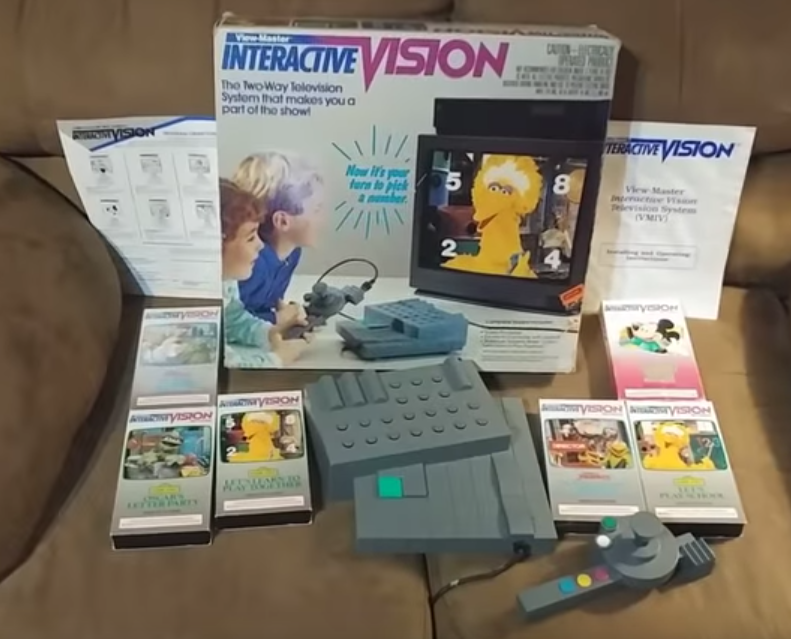
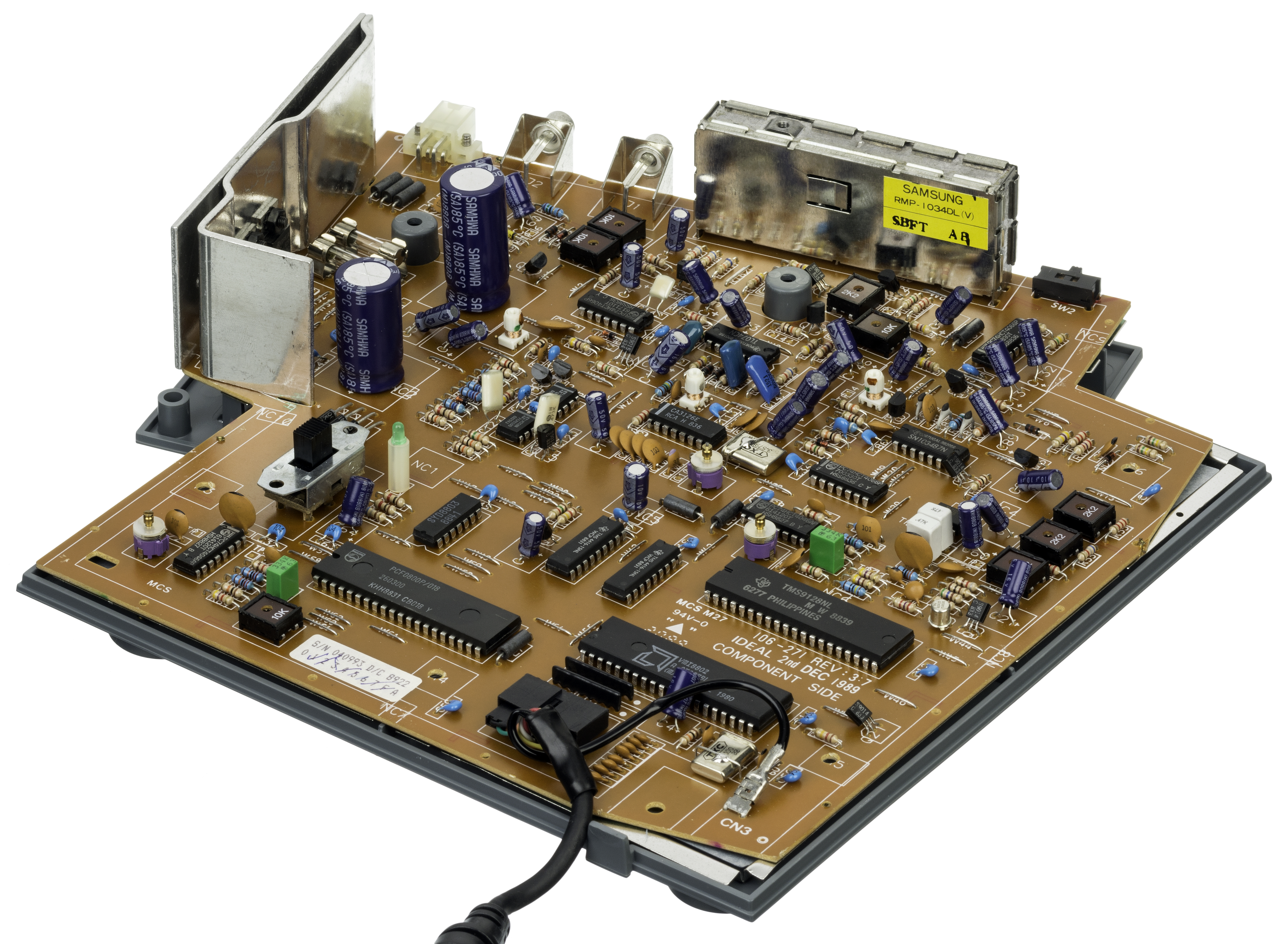


Gameplay From Disney’s Cartoon Arcade Uploaded by ZC-Infinity
Gameplay From Muppet Studios Presents: You’re the Director Uploaded by ZC-Infinity
Gameplay From Magic on Sesame Street Uploaded by ZC-Infinity
Despite the different names, these two are the same toy and serve the same function.
This toy was released in 1988 in Japan by Bandai and in 1989 in the United States by Mattel. The console was aimed at preschoolers. The Terebikko has around ten tapes released with popular Japanese media such as Doraemon, Dragon Ball, Anpanman, Super Mario, and Sailor Moon, while the See and Say only has four known tapes that center more around children’s classic fairy tale characters.
Even though the Terebikko and the See and Say were released in different regions, you can use Terebikko tapes with the See and Say, and vice-versa.
The console is a play telephone with four numbered buttons in red, blue, yellow, and green. The phone hooks up into the audio output of your television. The Terebikko and See and Say Video Phone had the phone connected to the console with a cord, but the Terebikko also got a cordless version that more resembled an upright telephone.
Unlike the Interactive Vision, this console doesn’t display any on screen graphics, doesn’t have a second audio track, and has a limited level of interactivity. The way the console and tapes worked was that tones containing data would play on the tape, if the phone is plugged into the audio output, then you won’t hear the tones. Instead, the tones will tell the phone what part of the tape is currently playing.
The tapes all work the same, the child is presented with a question with four different answers. The character on screen will “call” the child on the toy telephone, which will ring. The characters on screen will then talk to the child through the phone’s speaker, and ask them the question. The child will then need to press the button that correlates to the correct answer.
While the tape only has one audio track, it does have different voice lines depending on if the child got the answer right or wrong. The phone will play the needed voice line by muting the speaker until it reaches the audio clip it needs. The child can then hang up the phone until it’s needed again.
If you happen to find one of these laying around, whether it be the Japanese or American version, if your tv or computer monitor happens to have an audio output you can actually use the system without the need for the tapes. You can find most of the tapes preserved on websites like YouTube and The Internet Archive.
Connor Toys also released their own version of this toy, simply called the Video Phone. While images of the Video Phone and its tapes exist online, there isn’t any known footage of the toy in action or the tapes that came with the toy. Though it can be speculated that it works similar to the Terebikko and See and Say Video Phone, and may be able to use their respective tapes.


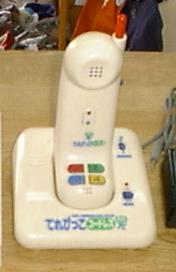
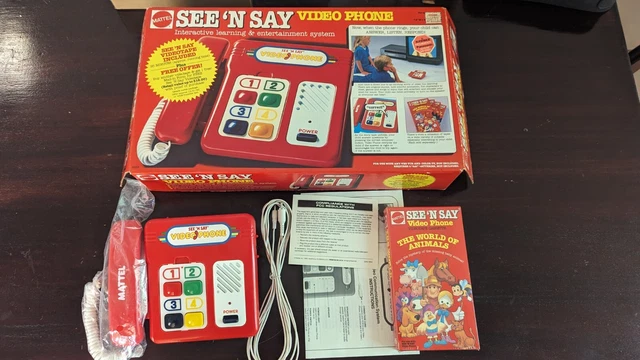


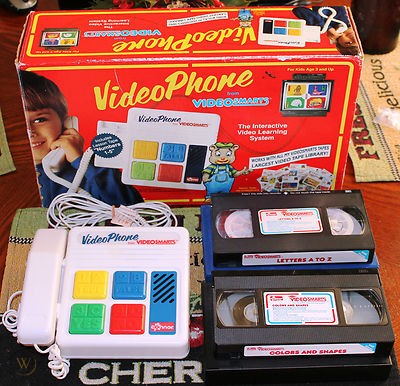
Footage of Mario to Yoshi no Bouken Land uploaded by Cabbusses
Footage of Trouble in Mother Goose Land uploaded by Cabbusses
Footage of how the console works uploaded by Cabbusses
These two consoles were both released by the Connor Toy Company, VideoSmarts was released in 1986 while ComputerSmarts was released in 1987, and were the first of they’re kind in terms of using VHS tapes to store the data necessary to communicate with the console.
Originally, it was planned to use Laserdisc as a medium, instead of VHS, but the technology was considered too expensive and thus inaccessible to the consumer.
VideoSmarts was geared more towards children as young as three, while ComputerSmarts was specifically for kids eight to ten years old.
Like the Terebikko, these two use an audio output jack on a tv or vcr that would read the tones on the tapes.
VideoSmarts consists of four colored buttons, an on/off switch, and a speaker. The buttons have both numbers and letters on them, as well as yes/no and true/false answers. ComputerSmarts is more of a typewriter or keyboard that the child must use to type out their answer, and is more suitable for teaching spelling, grammar, and math.
VideoSmarts had around 16 releases, while ComputerSmarts may have had around nine, not including the instructional tape. ComputerSmarts also had one game cartridge known to be released, with others possibly planned which may have never gone to market.
While the tape doesn’t respond to the answers, the speaker on the consoles do.
It’s safe to assume that you can use these consoles without the tapes, much like the Terebikko, by plugging the consoles into the audio output on your television or monitor, and loading up one of the tapes on YouTube.
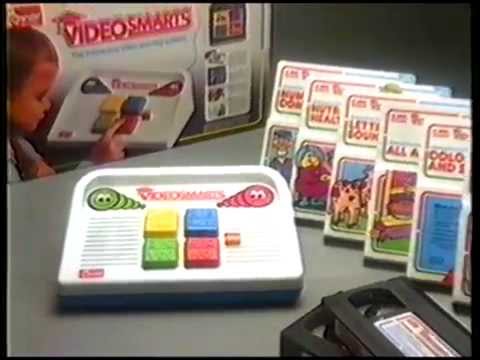




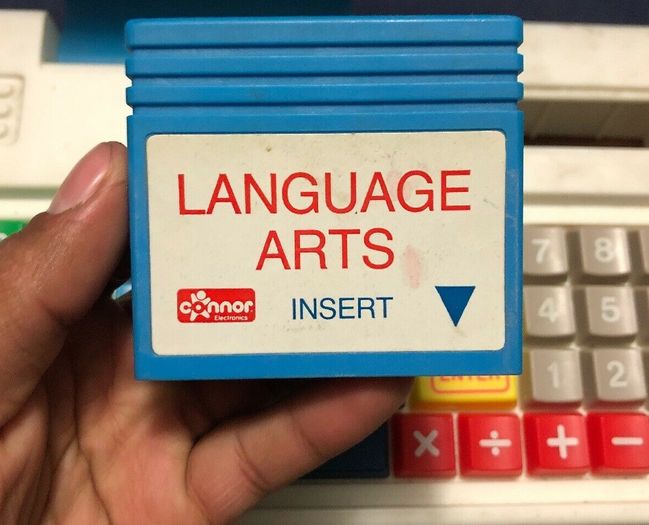
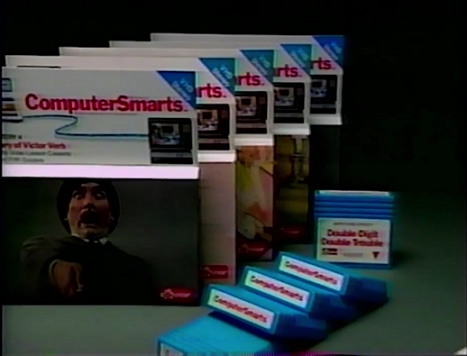
Short demonstration of ComputerSmarts uploaded by briannamoller
Short demonstration of VideoSmarts uploaded by Tina
VideoSmarts: All About Me uploaded by It Came From the 80’s
ComputerSmarts: Word Mystery 1 uploaded by It Came From the 80’s
The Video Buddy is a VHS based video game console targeted towards preschoolers, released in 1999 by Interactive Learning Group.
The console itself was the controller, which had a wire connected to a sensor that parents would attach to the television screen via a suction cup. The games were on vhs tapes that would be played in your average vcr.
During certain points in the video, the child will be asked to press a button on the controller corresponding to a choice on screen. The black circle will flash white to communicate with the sensor, telling it what part of the video is currently being played, what choices are available for the child to make, and which choice is the correct choice. The console presumably tells the child if they made the correct choice.
Video tapes released for the console include Muppet Babies, Paddington, Salty’s Lighthouse, and Big Comfy Couch.
In 2002, the system was rereleased with DVDs instead of VHS tapes.
The system and its videos were available for purchase from the Video Buddy website until 2006.


Muppet Babies What Do You Want To Be When You Grow Up uploaded to Internet Archive by TheManWithNoPlan
Stupid video won't load? Click Here!
These consoles were not meant to be educational, and are aimed towards all ages. These consoles focus mainly on playing a game to score points, and mainly consist of light gun games with flashing portions of the screen as targets that the player can shoot at. These consoles were considered lackluster due to their unchanging gameplay and lack of the ability to really win or lose.
Action Max was released in 1987 by Worlds of Wonder, and only had five games released during its lifespan.
Much like the Video Buddy, it has a sensor that is suction-cupped to the screen in the bottom right corner. The circle on the bottom right will flash or light up to light the red beacon on the sensor, telling the player that they are able to shoot, and telling the console when it is at a shooting section.
Additional targets on screen will also flash or light up, and the player needs to accurately point their lightgun at the targets in order to hit them, the console will then register the hit and add or deduct points to the total score. The score is displayed on the system.
The console is powered by four C batteries, and plugs into the audio output of the VCR. Though the reason for this is unknown, as the console doesn’t seem to receive any data from the tapes, the only sound played through the console seems to be the fire sound for the lightgun.
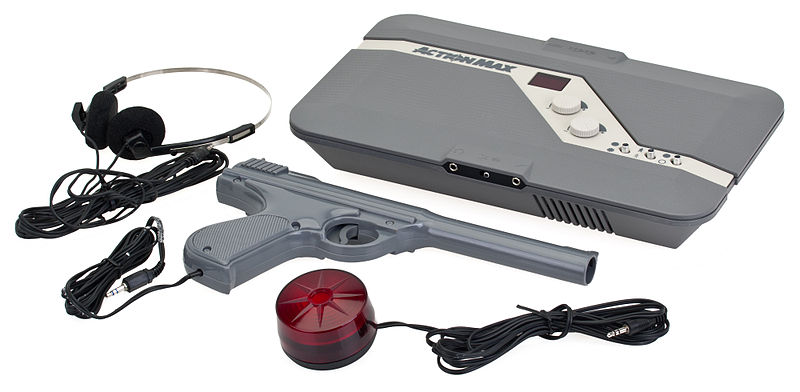
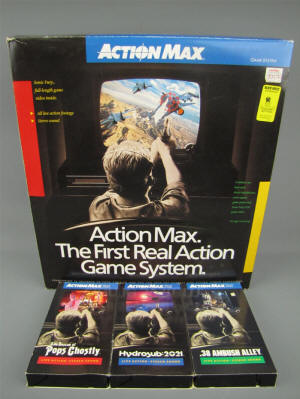
Action Max Game Video – The Rescue of Pops Ghostly uploaded by VHSafterlife
A demonstration of the Action Max from Cinemassacre
The Video Driver, also known as the Family Driver, was released in 1988 in Japan, the US, the UK, and Italy by Sega. It was distributed by Tyco in the United States, Action GT in the UK, and Gig Electronics in Italy.
The console is very basic. It consists of a plastic dashboard with a steering wheel and a shift stick, which connects to a large plastic cab with a sensor with a little car mounted on it. The cab sits hugged around the bottom of your television, and can be mounted higher to accommodate most sizes of CRT televisions. The wheel is used to move the car left and right, but the shift stick doesn’t seem to do much but “stop” the on-screen vehicle from moving.
Unlike these other consoles, it does not connect to the tv or the vcr through any wires, and is simply its own standalone that runs on batteries.
During the course of the tape, a black bar is on the part of the screen covered by the cab, white flashing bars will move back and forth on the sides to represent obstacles. The goal is to keep the car’s sensor in the black portion of the screen, if it detects any of the white portions the player’s score will go down, starting at 100. A button can be pressed after the game is over in order to reset the score back to 100.
Around three tapes were released for the Video Driver.
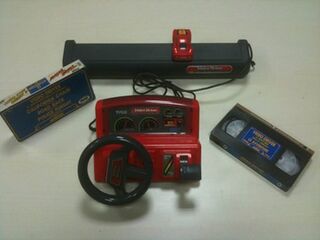
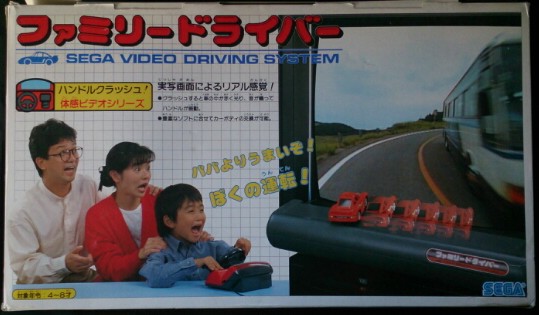
The Forgotten SEGA Console | Video Driver uploaded by RMC – The Cave
Sega Video Driver – California Chase raw footage uploaded by SceneCat
The Video Challenger was released in Japan in 1987 by Takara and in Europe by Bandai.
The system only consisted of one battery operated lightgun and a videotape. The player looks through the window positioned above the score in order to aim at the flashing targets on screen. The gun makes sounds when the player fires the gun or gets hit, and keeps and displays the score. The score will go up when a target is successfully hit, and down if the player is hit.
The toy had seven releases for it, some only exclusive to Japan and some only exclusive to Europe.

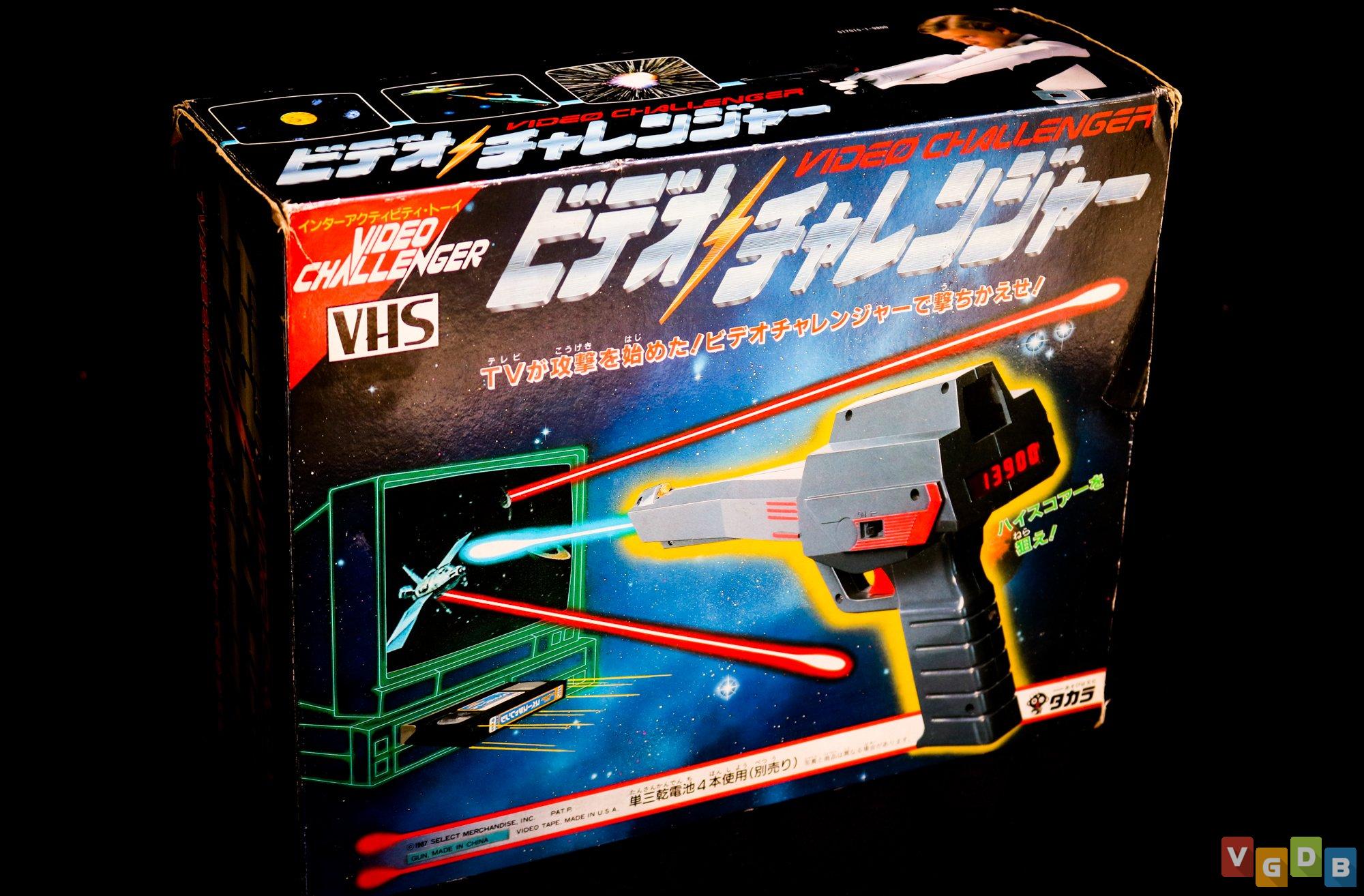
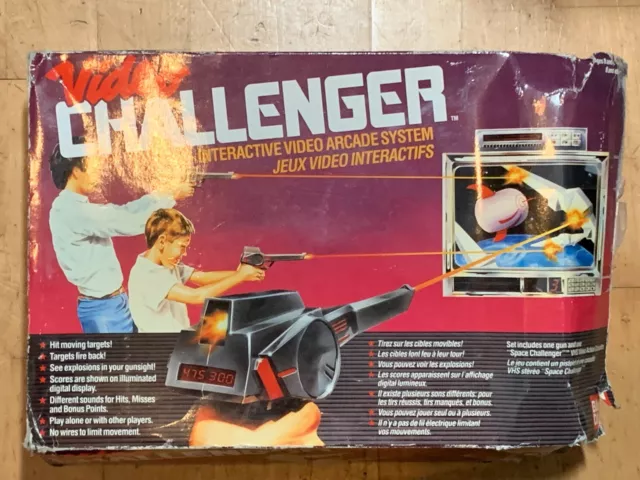
Demonstration of the Video Challenger uploaded by Retro Game Living Room
Raw footage of the Afterburner tape uploaded by gkoyt
BattleVision was released in 1994 by Tiger Electronics. The Captain Power line of toys were released in 1987 by Mattel.
Much like the Video Challenger, these toys are battery operated, and require the player to aim at flashing targets for points with consequences if the player gets hit.
However, rather than just simply deducting points, these toys would react to the player being hit by launching a part of the toy away, in this case an action figure that was mounted to certain spots on the toy
While both of these toys had videotapes to go along with them, Captain Power could also be used with the toy’s television show, Captain Power and the Soldiers of the Future. The Captain Power toys could also be used to battle other toys in the line without the need for the tapes or show.
Captain Power only had three tapes released, while BattleVision is only known to have one, with a second tape planned but going unreleased. BattleVision was also reportedly supposed to have game cartridges, but these were never released either.




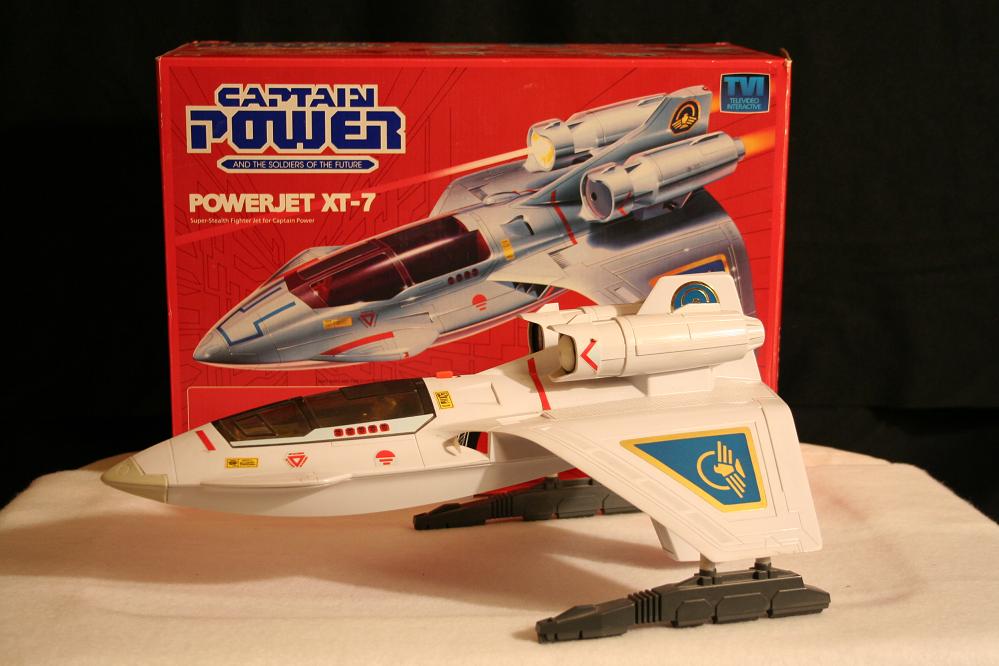
BattleVision – Doom on You uploaded by The VHS Reviver
Commercial for the BattleVision uploaded by Movie & Video Game TV Spots
Episode of the Captain Power tv show uploaded by OtizCutter2
One of the Captain Power Training Tapes uploaded by VHS Preservation Institute